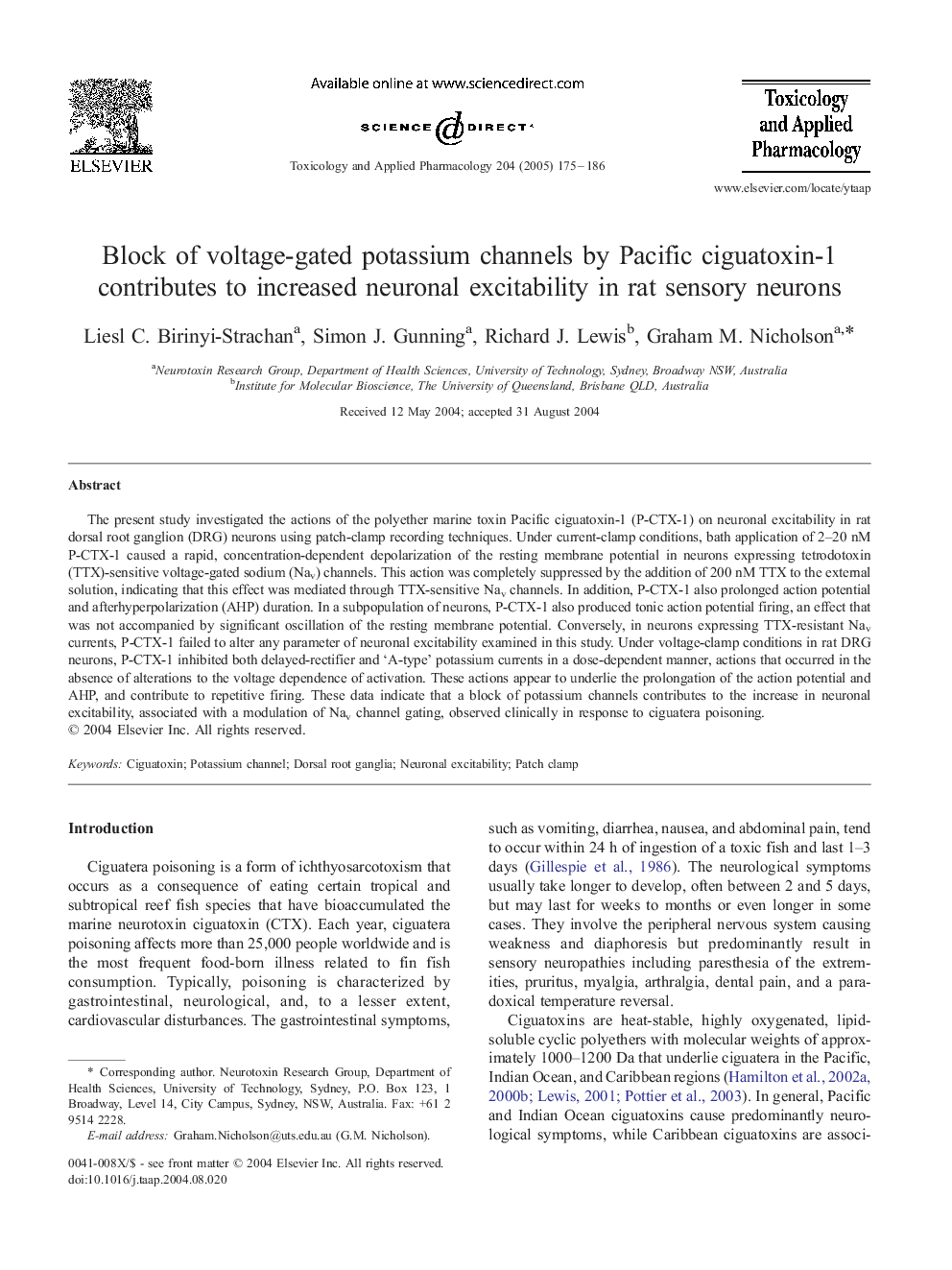| Article ID | Journal | Published Year | Pages | File Type |
|---|---|---|---|---|
| 9018172 | Toxicology and Applied Pharmacology | 2005 | 12 Pages |
Abstract
The present study investigated the actions of the polyether marine toxin Pacific ciguatoxin-1 (P-CTX-1) on neuronal excitability in rat dorsal root ganglion (DRG) neurons using patch-clamp recording techniques. Under current-clamp conditions, bath application of 2-20 nM P-CTX-1 caused a rapid, concentration-dependent depolarization of the resting membrane potential in neurons expressing tetrodotoxin (TTX)-sensitive voltage-gated sodium (Nav) channels. This action was completely suppressed by the addition of 200 nM TTX to the external solution, indicating that this effect was mediated through TTX-sensitive Nav channels. In addition, P-CTX-1 also prolonged action potential and afterhyperpolarization (AHP) duration. In a subpopulation of neurons, P-CTX-1 also produced tonic action potential firing, an effect that was not accompanied by significant oscillation of the resting membrane potential. Conversely, in neurons expressing TTX-resistant Nav currents, P-CTX-1 failed to alter any parameter of neuronal excitability examined in this study. Under voltage-clamp conditions in rat DRG neurons, P-CTX-1 inhibited both delayed-rectifier and 'A-type' potassium currents in a dose-dependent manner, actions that occurred in the absence of alterations to the voltage dependence of activation. These actions appear to underlie the prolongation of the action potential and AHP, and contribute to repetitive firing. These data indicate that a block of potassium channels contributes to the increase in neuronal excitability, associated with a modulation of Nav channel gating, observed clinically in response to ciguatera poisoning.
Related Topics
Life Sciences
Environmental Science
Health, Toxicology and Mutagenesis
Authors
Liesl C. Birinyi-Strachan, Simon J. Gunning, Richard J. Lewis, Graham M. Nicholson,
